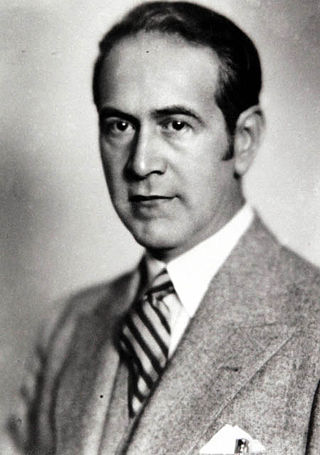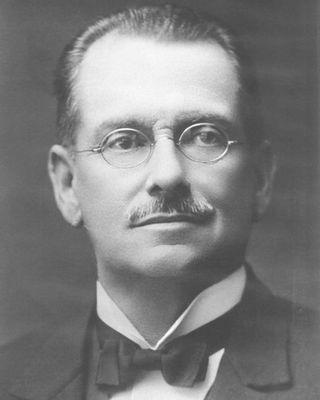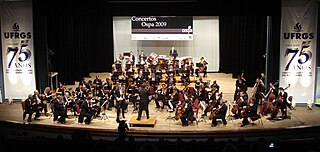
Bom Fim (meaning Good End in English) is a neighborhood in the city of Porto Alegre, the state capital of Rio Grande do Sul in Brazil. It was created by the law number 2022 from December 7, 1959.

Bom Fim (meaning Good End in English) is a neighborhood in the city of Porto Alegre, the state capital of Rio Grande do Sul in Brazil. It was created by the law number 2022 from December 7, 1959.

Bom Fim had its origins in a region commonly known as Campo da Várzea. It was located in a public area of 69 hectares that served as a camp for the carts, carman and where the cattle destined to supply the city remained. Campo da Várzea came to be known as Campos do Bom Fim due to the construction of the Chapel of Our Lord Jesus of Bom Fim, which began in 1867 and completed in 1872.
Until the end of the 19th century there were no major changes to the site. Around the end of the 1920s, the first Jewish immigrants began to settle in the neighborhood, where they built a strong community. The author Moacyr Scliar was raised in the area and wrote a novel about it. [1] "A Guerra no Bom Fim", [2] described the life of the neighborhood's residents at the time of World War II.
Some homes, small shops and workshops started the process of effectively populating the neighborhood. The diversification of this small business accompanied the natural growth of the city, with Bom Fim becoming a residential and commercial district, with emphasis on furniture stores.
The neighborhood houses some historic buildings such as the building of the Italian Society of Rio Grande do Sul, founded in 1893.
Also, there is located a highly-regarded private school of the city, the Projeto school.

Bom Fim remains a symbol of Jewish heritage in Porto Alegre. There are five synagogues located in the neighborhood: Centro Israelita, Linat Hatzedeck, Beit Lubavitcher, Maurício Cardoso Society (known as the Poilisher Farband) and União Israelita. In addition to the synagogues, there is also the Hebrew Society, the Cultural Club and the Israeli Federation of Rio Grande do Sul (Firgs), which houses the National Museum of Jewish Migrations.
One of the neighborhood's synagogues, União Israelita de Porto Alegre, completed its centenary in 2010 [3] and is one of the oldest in Brazil and also the fourth in the Americas with uninterrupted activities. The synagogue houses relics such as a 350-year-old Torah on a natural scroll and a collection of Talmuds printed in Austria in 1840.
During the week, it is fast-paced neighborhood, mainly close to Oswaldo Aranha Avenue. However, on Saturdays and Sundays it is almost a bucolic neighborhood, with an atmosphere that resembles the country side. Two farmers markets are held weekly in the neighborhood: on Tuesday mornings at João Telles Street and on Saturday afternoons at Irmão José Otão Street. On Saturdays, there is also an ecological market at the edge of Farroupilha Park.
Frequented by intellectuals and members of alternative and counter-cultural movements, the neighborhood's atmosphere is vibrant and diversified. In or around it are located cafes, bookstores, universities, schools, chapels, synagogues and cultural spaces such as the Italian Society of Rio Grande do Sul. The restaurant Tablado Andaluz , the diner Lancheria do Parque , and the bar Ocidente, the latter being a traditional nightclub and cultural space created in 1980, which hosts concerts, parties, plays and literary soirees. Some traditions are still live in the neighborhood, such as two delicatessens specializing in Kosher products and products for typical Jewish dishes, Sabra and Lechaim. However, traditional spaces were destroyed by real estate speculation such as Cinema Baltimore and Bar João.
The neighborhood is the subject of many cultural pieces such as a documentary directed by Boca Migotto, with its premiered in 2015, [4] which deals with the period in which Bom Fim was the scene of effervescence in cinema, theater and music. The feature film runs from Esquina Maldita, a bohemian stronghold of the 1970s, to the curve of José Bonifácio Avenue, where the Escaler bar was located, frequented by a crowd that gathered there in the 1980s and 1990s and passes through places frequented by different tribes, such as Lola, Bar João, Ocidente, Lancheria do Parque, Baltimore and Bristol cinemas. In addition, music icons such as Kleiton and Kledir, Nei Lisboa and Vitor Ramil have mentioned the neighborhood in their songs. [5]

Starting and ending point: where Oswaldo Aranha Avenue meets Sarmento Leite Street; from that point, follow Sarmento Leite Street to Irmão José Otão Street, down to Barros Cassal Street; from this point it follows a straight and imaginary line, heading east, until the intersection of Fernandes Vieira Street and Castro Alves Street, along the latter to Ramiro Barcelos Street, circling back to Oswaldo Aranha Avenue.
It is limited by four neighborhoods: Historic District, Farroupilha, Independência and Rio Branco.

Porto Alegre is the capital and largest city of the Brazilian state of Rio Grande do Sul. Its population of 1,488,252 inhabitants (2020) makes it the twelfth most populous city in the country and the center of Brazil's fifth largest metropolitan area, with 4,405,760 inhabitants (2010). The city is the southernmost capital city of a Brazilian state.

Oswaldo Euclides de Sousa Aranha was a Brazilian politician, diplomat and statesman, who came to national prominence in 1930 under Getúlio Vargas.

The Federal University of Rio Grande do Sul is a Brazilian public federal research university based in Porto Alegre, Rio Grande do Sul. UFRGS is among the largest and highest-rated universities in Brazil, having one of the largest number of scientific publications. From 2012 to 2019, the university was elected as the best federal university of Brazil. UFRGS has over 31,000 undergraduate students, over 12,000 graduate students, and more than 2,600 faculty members. As a Brazilian public federal institution, students do not pay tuition fees to enroll in courses offered by the university.

The Ragamuffin War was a Republican uprising that began in southern Brazil, in the province of Rio Grande do Sul in 1835. The rebels were led by generals Bento Gonçalves da Silva and Antônio de Sousa Neto with the support of the Italian fighter Giuseppe Garibaldi. The war ended with an agreement between the two sides known as Green Poncho Treaty in 1845.

Moacyr Jaime Scliar was a Brazilian writer and physician. Most of his writing centers on issues of Jewish identity in the Diaspora and particularly on being Jewish in Brazil.

Guaíba is a city located in the Metropolitan Porto Alegre of Porto Alegre, in the Brazilian state of Rio Grande do Sul. The city is on the shores of the Guaíba Lake.

Augusto Pestana was a Brazilian engineer and politician. Born in Rio de Janeiro, Pestana moved in the late 1880s to Rio Grande do Sul, Brazil's southernmost state, where he would become a specialist in railroad engineering and public administration, as well as one of the main leaders of the Republican Party of Rio Grande do Sul (PRR).

The Pontifical Catholic University of Rio Grande do Sul is a private non-profit Catholic university. With campuses in the Brazilian cities of Porto Alegre and Viamão, it is the largest private university of the state of Rio Grande do Sul and the first university founded by the Catholic religious institute of the Marist Brothers. PUCRS is considered the best private university of Brazil's Southern Region by the Ministry of Education (MEC), and one of the best private universities in the country, with FGV, PUC-Rio and the PUC-SP.

Colégio Farroupilha is one of the most traditional private schools in Porto Alegre and in Brazil. It has ranked at the top 1% of schools in Brazil for as long as the ENEM ranking has existed.

Cidade Baixa is a neighborhood of the city of Porto Alegre, the state capital of Rio Grande do Sul in Brazil. The neighborhood was created by the law number 2022 of December 7, 1959.

Centro Histórico is a neighborhood of the city of Porto Alegre, the state capital of Rio Grande do Sul in Brazil.

The Porto Alegre Symphony Orchestra is a Brazilian orchestra based in Porto Alegre, in the state of Rio Grande do Sul. It was founded in 1950 under the direction of the Hungarian conductor Pablo Komlós. Since January 22, 1965, the Porto Alegre Symphony Orchestra is a foundation funded by the state government of Rio Grande do Sul.

Três Figueiras is a neighbourhood of the city of Porto Alegre, the state capital of Rio Grande do Sul, Brazil. A residential neighbourhood, it embrace people from upper middle class to upper class, having many sophisticated houses. Três Figueiras was created by Law 2022 of December 7, 1959. There is located the Design School of Unisinos. Also, there has two highly regarded and traditional private schools, the Farroupilha and Anchieta schools, and a highly regarded private school for childhood, the Baby House.
Agronomia is a neighbourhood (bairro) in the city of Porto Alegre, the state capital of Rio Grande do Sul, Brazil. It was created by Law 4166 from September 21, 1976, but had its limits modified in 1990 and 1997.

Farroupilha is a neighbourhood (bairro) in the city of Porto Alegre, the state capital of Rio Grande do Sul, in Brazil. It was created by Law 2022 from December 7, 1959.
Nei Van Soria is a Brazilian singer-songwriter, lyricist, pianist, guitarist and record producer, famous for his work with pioneering Rio Grande do Sul rock bands TNT and Os Cascavelletes.
The following is a timeline of the history of the city of Porto Alegre, in the state of Rio Grande do Sul, Brazil.
The 2022 Rio Grande do Sul state election took place in the state of Rio Grande do Sul, Brazil on 2 October 2022. Voters elected a Governor, Vice Governor, one Senator, 31 representatives for the Chamber of Deputies and 55 Legislative Assembly members, with a possible second round to be held on 30 October 2022. Former governor Eduardo Leite, was eligible for a second term and announced that he's running for reelection.

Miss Rio Grande do Sul is a Brazilian Beauty pageant which selects the representative for the State of Rio Grande do Sul at the Miss Brazil contest. The pageant was created in 1954 and has been held every year since with the exception of 1990, 1993, and 2020. The pageant is held annually with representation of several municipalities. Since 2017, Marcelo Sóes has been the state director of Miss Rio Grande do Sul. Rio Grande do Sul is the state with the most crowns in the national contest and also the state that produced the first Miss Brazil to win the Miss Universe contest, Iêda Maria Vargas of Porto Alegre.
Armindo Antônio Ranzolin was a Brazilian sports journalist and narrator. He was director of Rádio Gaúcha, of Grupo RBS.
Coordinates: 30°01′57″S51°12′44″W / 30.03250°S 51.21222°W